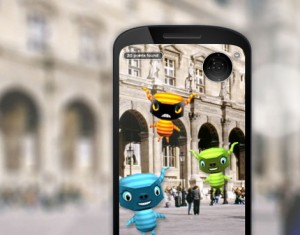A new term is being introduced to the marketing and advertising vocabulary, ‘Gladvertising’ – gladvertising is a way of advertising based on emotion recognition software (ERS) and cameras to detect whether consumers are happy, tailoring adverts to their mood.
The Centre for Future Studies has carried out a report, called ‘Up Front and Personal’ and commissioned by digital advertising company 3MGTG, in which it predicts an advertising revolution taking place over the next 12 months.It says that 3D outdoor adverts that talk to mobile phones, adapt messages to certain situations, access social network profiles and combine holograms, mood lighting and smells, could all be on our streets by 2012.
Daniel Steinbichler, Chief Executive, 3M|GTG [2], said: “Steven Spielberg got it wrong. We are working on Minority Report-style technology that will be with us by 2015 – not 2054. Plus it will be more advanced than the director ever imagined. Instead of just recognising consumers by name – as in the film – technology, such as gladvertising, will allow brands to offer interactive experiences.”
Unlike many new technologies which take time to bed in, experts believe consumers are ready to embrace these new technologies after adopting 3DTVs, touch screens (iPhone), gesture controls (Kinect) and augmented reality (Layar).
The report, based on 21 in-depth interviews with the world’s leading technologists, advertisers and media businesses, concluded a totally new form of advertising, dubbed ‘Gladvertising’ by the report authors, will be one of the first innovations to arrive.
Gladvertising uses a face-tracking algorithm to match movements of the eyes and mouth to six expression patterns corresponding to happiness, anger, sadness, fear, surprise and disgust. This allows marketers to influence consumers with tailored adverts. For example, if the system identifies unhappy consumers walking towards a billboard, adverts for chocolate and sun drenched holidays might be displayed.
The digital-out-of-home innovations consumers will be interacting with by 2015, include:
- Contextual adverts – digital outdoor adverts tailored to consumers’ situation. As consumers wait for their delayed bus, their bus shelters’ 3D screens will display adverts advocating the benefits of a car sharing service. Or when it starts to rain, holographic billboards will display adverts for umbrellas with Gene Kelly serenading passersby with Singing in the Rain.
- Multisensory adverts – digital-out-of-home experts are developing adverts that stimulate a variety of senses. Multisensory adverts on underground platforms will combine holographic video, sound, mood lighting and smells to multiply adverts’ impact and extend consumers’ recall time.
- Personal Preference Profiles (PPPs) – these supercharged social network profiles are 50 times more in-depth than a Facebook profile and include details on the user’s body shape, allergies, anniversaries, favourite food, colour, etc. Consumers’ PPPs will then interact with out-of-home adverts via their NFC phones, if they decide to opt-in.
- Phones that talk to adverts – the proliferation of near field communication (NFC) in phones like the iPhone 5, Blackberry Curve Apollo and HTC Magic will enable digital advertising boards to identify a person – via their PPP – as they approach. Once identified, adverts will be tailored to the consumer. For example, a 3D jeans advert would replace supermodels with consumers walking towards the holographic billboard.
- ‘Dance for your discount’ – the success of Microsoft’s Kinect means marketers will be introducing interactive, gesture-based games on the high street to connect user with brands. For example, sports brands will challenge consumers to a virtual penalty shootout competition outside their stores – the winner gets 20% off a pair of football boots via a coupon sent to their NFC enabled phone.
- Advanced HD vending machines – vending machines will feature 60” 3D screens and haptic controllers so consumers can see and feel products before buying them. Haptic controllers are based on tactile feedback technology which takes advantage of a user’s sense of touch by applying forces to the human hand, giving consumers a sense of the product they are about to buy. While 3D printing technology will enable the vending machine to manufacture the item in 30 seconds.
Steinbichler said, “We commissioned the report to highlight the advanced technology just around the corner and the applications which will take digital-out-of-home to the next level. At 3MGTG we are investing heavily to make the science fiction of Minority Report a reality, offering consumers immersive brand experiences they’ll never forget. We will bring the innovations outlined in the report to the high street within the next four years.”

4 Comments To "Rita Hayworth Gave Good Face"
#1 Comment By Jim Gerken On 3 March 2011 @ 16:27 @727
What a sexist, degrading headline to use, particularly since it bears so little relevance to the article.
#2 Comment By Adrian J Cotterill, Editor-in-Chief On 3 March 2011 @ 17:07 @755
Sure Jim we’lll pass on your concerns to Shep Pettibone and Madonna Louise Veronica Ciccone
#3 Comment By Marilyn On 3 March 2011 @ 18:49 @826
Glad the headline didn’t say Head!
#4 Comment By Adam Malone On 3 March 2011 @ 22:51 @994
Love reading research reports like this. “Well done” to all authors and contributors.
Prognostication is great.. trend watching is fine.. but making it happen is even better!